ChatGPT:
Annecy is a picturesque town located in the southeastern part of France, in the Haute-Savoie department of the Auvergne-Rhône-Alpes region. Known as the “Pearl of the French Alps,” Annecy is famous for its stunning natural scenery, including the pristine Lake Annecy, often regarded as one of the cleanest lakes in Europe. The town is crisscrossed by canals, earning it the nickname “Venice of the Alps.”
Key attractions in Annecy include the medieval Château d’Annecy, which offers panoramic views of the lake and town, and the Palais de l’Isle, a historic building situated on an island in the Thiou River that now serves as a local history museum. The town’s charming old town (Vieille Ville) features narrow, cobblestone streets lined with colorful houses, shops, and cafes.
Annecy is also a hub for outdoor activities, with opportunities for hiking, cycling, swimming, and boating in the summer, and skiing in the nearby Alps during the winter. The town hosts various festivals and events throughout the year, including the Annecy International Animation Film Festival, which attracts industry professionals and enthusiasts from around the world.
Annecy’s history dates back to Roman times, though it gained significant prominence during the medieval period. Here’s an overview of its historical development:
Early History
- Roman Era: The area around Annecy was originally settled by the Allobroges, a Gallic tribe. The Romans established a settlement named Boutae nearby, which laid the groundwork for future development.
- Early Middle Ages: After the fall of the Roman Empire, the region was influenced by various powers, including the Burgundians and the Franks.
Medieval Period
- Formation and Growth: The town of Annecy itself began to take shape in the 12th century. The Counts of Geneva established their residence here, which boosted its significance. The construction of the Château d’Annecy began during this time, serving as a fortress and residence for the counts.
- Economic Development: Annecy’s strategic location at the crossroads of trade routes helped it grow economically. It became a center for commerce and craftsmanship.
Renaissance and Reformation
- Geneva and the Reformation: During the Protestant Reformation in the 16th century, Annecy became a refuge for Catholics expelled from Geneva, including Saint Francis de Sales, who played a crucial role in the Counter-Reformation. He became the Bishop of Geneva and headquartered himself in Annecy, making it a center of Catholic reform.
- Cultural Flourishing: This period also saw cultural and architectural development, with the construction of religious and civic buildings.
Modern Era
- Savoy and France: Annecy was part of the Duchy of Savoy until the 19th century. It experienced various political changes, including brief periods under French control during the Napoleonic Wars.
- Annexation to France: In 1860, following a plebiscite, the Duchy of Savoy was annexed to France, and Annecy officially became a French town.
20th Century to Present
- Tourism and Industry: The 20th century brought significant changes with the development of tourism. Lake Annecy’s reputation as one of the cleanest lakes in Europe and the surrounding alpine scenery made it a popular destination. The town also developed light industries.
- Cultural Hub: Annecy has grown into a cultural hub, hosting the renowned Annecy International Animation Film Festival. Its historic charm, combined with modern amenities, continues to attract visitors and residents alike.
Throughout its history, Annecy has managed to preserve its medieval charm while embracing modernity, making it a unique blend of old and new.
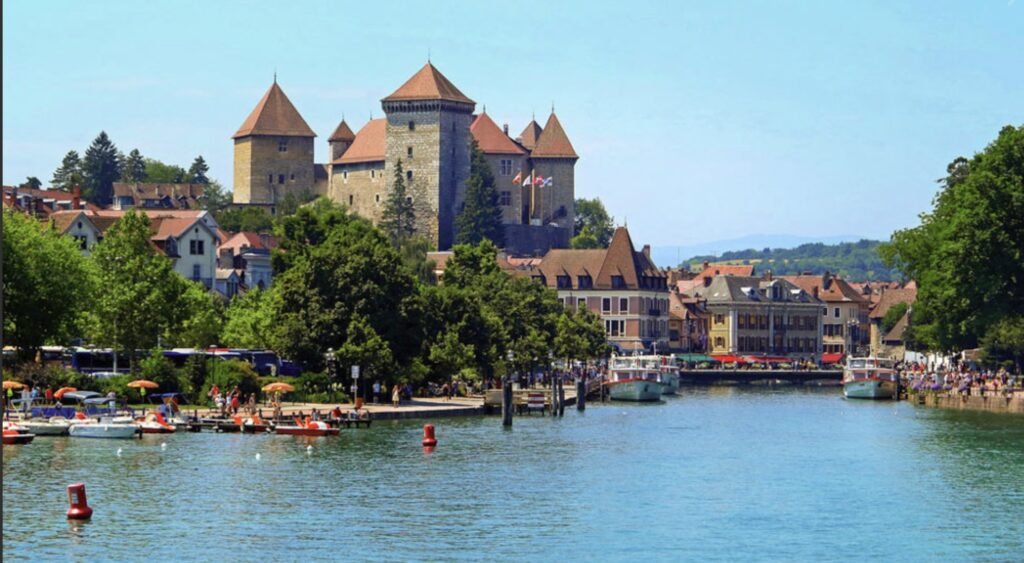
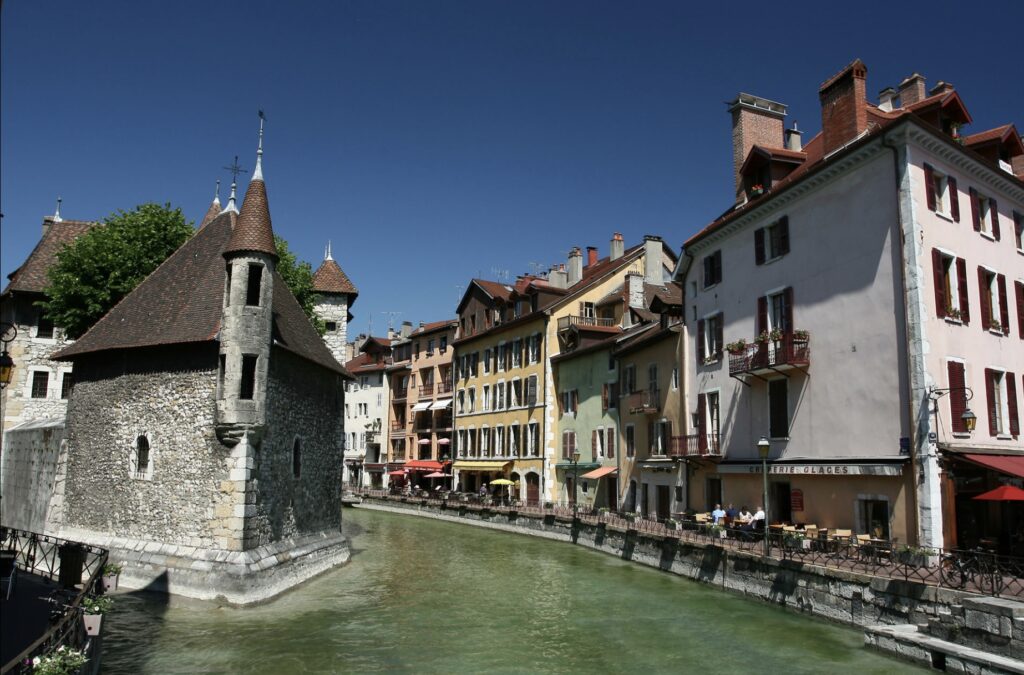
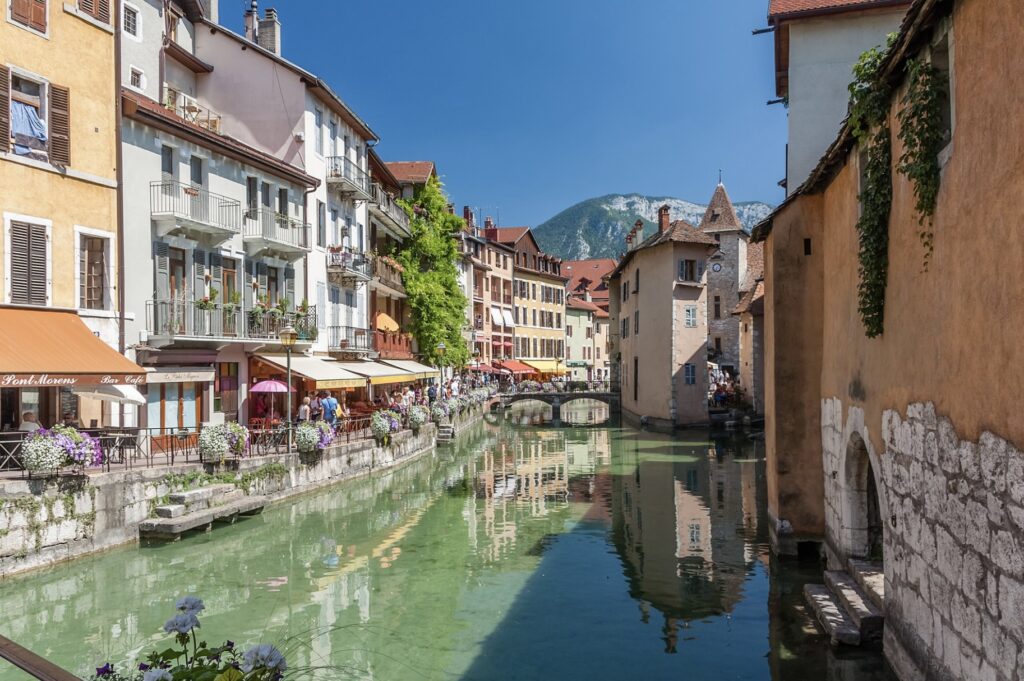
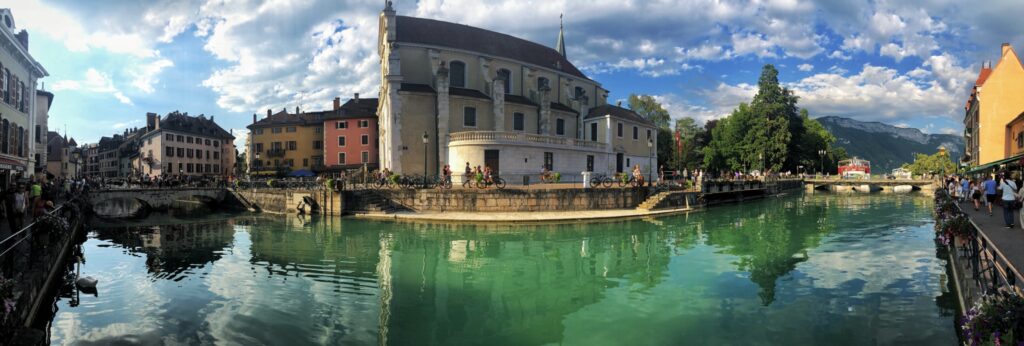
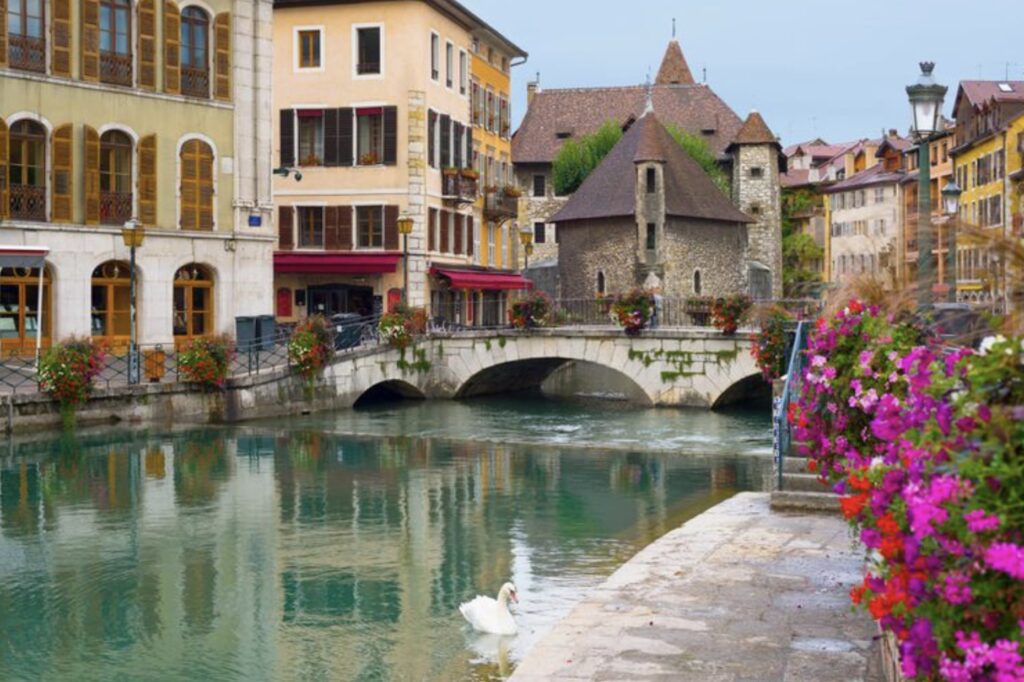
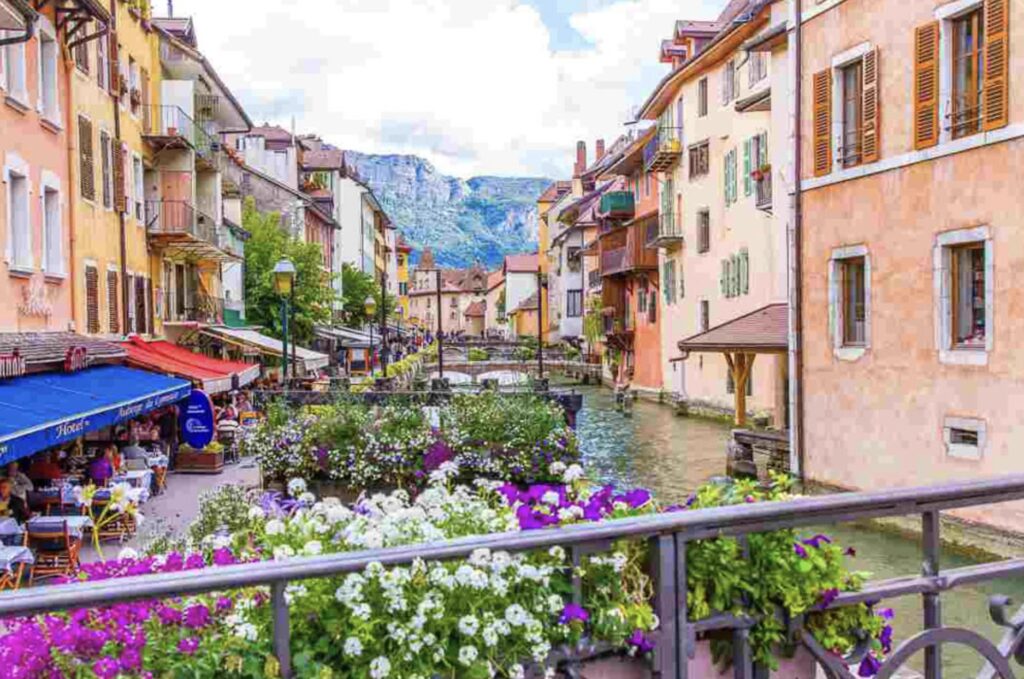
Annecy offers a wide range of attractions that showcase its historical, cultural, and natural beauty. Here are some of the key attractions in the town:
- Lake Annecy: Known for its crystal-clear waters, it’s a popular spot for swimming, boating, and other water activities. The surrounding promenades and parks offer beautiful views and leisurely walks.
- Château d’Annecy: This medieval castle, which overlooks the town and the lake, now houses a museum showcasing regional art, history, and natural sciences.
- Palais de l’Isle: A 12th-century building located on an island in the Thiou River, it has served various purposes over the centuries and now functions as a local history museum.
- Vieille Ville (Old Town): Annecy’s historic old town is characterized by narrow cobblestone streets, pastel-colored buildings, canals, and lively markets. It’s a great place to explore shops, cafes, and restaurants.
- Pont des Amours (Lovers’ Bridge): This picturesque bridge offers one of the best views of Lake Annecy and the surrounding mountains. It’s a popular spot for romantic strolls and photographs.
- Église Saint-Maurice: A Gothic church dating back to the 15th century, known for its beautiful stained glass windows and historic significance.
- Cathédrale Saint-Pierre: This 16th-century cathedral was the seat of Saint Francis de Sales, and it features impressive architecture and religious artifacts.
- Gardens of Europe (Jardins de l’Europe): A large park on the shores of Lake Annecy, perfect for a relaxing stroll, picnics, or enjoying the scenic views.
- Basilique de la Visitation: Located on a hill overlooking Annecy, this basilica offers panoramic views of the town and the lake. It’s dedicated to Saint Francis de Sales and Saint Jane Frances de Chantal.
- Thiou Canal: One of the shortest rivers in France, the Thiou Canal runs through the old town, adding to the charm and picturesque nature of Annecy.
- Museums: Besides the Château d’Annecy museum, other notable museums include the Musée du Film d’Animation, which highlights Annecy’s role in the animation industry, and the Musée Paccard, dedicated to the history of bell making.
- La Tournette: For outdoor enthusiasts, hiking La Tournette, the highest peak around Lake Annecy, offers challenging trails and breathtaking views.
The best time to visit Annecy without the crowds is during the shoulder seasons of late spring (May to early June) and early autumn (September to early October). During these periods, you can enjoy pleasant weather while avoiding the peak tourist season crowds that flock to Annecy in the summer.
Benefits of Visiting During Shoulder Seasons:
- Milder Weather: The temperatures are generally comfortable, ideal for outdoor activities and sightseeing without the summer heat.
- Fewer Tourists: You’ll find fewer crowds at popular attractions, making it easier to explore and enjoy the town and its surroundings.
- Lower Prices: Accommodation and travel costs are often lower compared to the peak summer season, providing better value for your trip.
- Local Events: You may also have the chance to experience local events and festivals that are less crowded than the major summer events.
Specific Recommendations:
- Late Spring (May to Early June): The weather is warming up, flowers are in bloom, and the lake is starting to become inviting for water activities. This is a great time for hiking, cycling, and enjoying the natural beauty of the area.
- Early Autumn (September to Early October): The weather is still pleasant, and the autumn colors start to appear, adding a beautiful backdrop to your visit. It’s also a good time for outdoor activities and exploring the local vineyards and culinary delights.
By visiting during these times, you can experience the charm and beauty of Annecy without the hassle of large crowds.
A day trip around Lake Annecy by ferry offers a fantastic way to explore some of the most beautiful and interesting sites in the area. Here’s a suggested itinerary for a one-day ferry trip:
Morning
- Depart from Annecy: Begin your day at Annecy’s main ferry terminal. Take an early morning ferry to maximize your time.
- First Stop – Talloires:
- Visit the Abbey of Talloires: This historic abbey dates back to the 11th century and offers a beautiful setting and tranquil gardens.
- Stroll Around the Village: Explore the charming streets, local shops, and enjoy a coffee or pastry at a local café.
- Optional Activity: If you’re interested, Talloires is a great place for a short hike up to the Cascade d’Angon, a lovely waterfall with stunning views of the lake.
Mid-Morning to Early Afternoon
- Second Stop – Menthon-Saint-Bernard:
- Visit Château de Menthon-Saint-Bernard: This fairy-tale castle perched on a hill offers guided tours of its beautifully preserved interiors and gardens. The castle is said to have inspired Walt Disney’s Sleeping Beauty castle.
- Enjoy the Lake: Spend some time at the local beach, or rent a paddleboard or kayak to explore the lake up close.
Lunch
- Lunch in Menthon-Saint-Bernard: There are several charming restaurants and cafes in the village where you can enjoy a leisurely lunch with a view of the lake. Alternatively, you could bring a picnic to enjoy by the water.
Early Afternoon
- Third Stop – Doussard:
- Nature Reserve at Bout du Lac: Visit the Nature Reserve at the southern tip of the lake. It’s a peaceful area with walking trails and plenty of wildlife, perfect for a relaxing nature walk.
- Beach Time: Doussard also has a beautiful beach area where you can relax, swim, or take a paddleboat out on the lake.
Late Afternoon
- Return to Annecy:
- Cruise Back: Enjoy the scenic ferry ride back to Annecy, taking in the stunning views of the surrounding mountains and the crystal-clear waters of Lake Annecy.
- Explore More of Annecy: If time permits, explore more of Annecy’s old town, or have an early dinner at one of the lakeside restaurants.
Evening
- Dinner in Annecy: Finish your day with a delightful dinner at a local restaurant, enjoying regional specialties like tartiflette or freshwater fish from the lake.
This itinerary allows you to experience a mix of historical sites, natural beauty, and leisurely activities, making the most of a day trip around Lake Annecy by ferry.
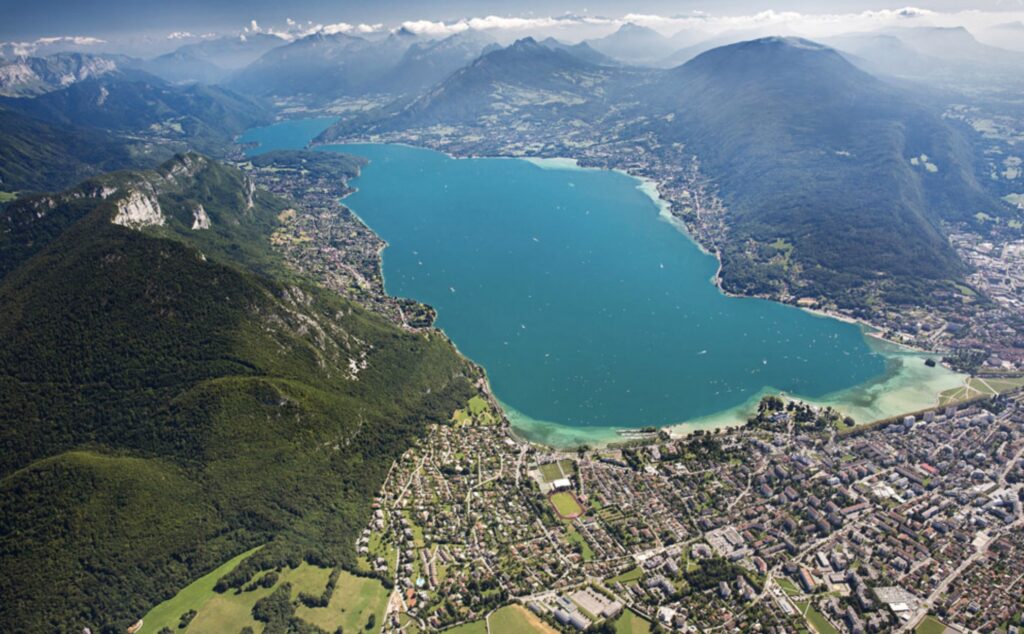
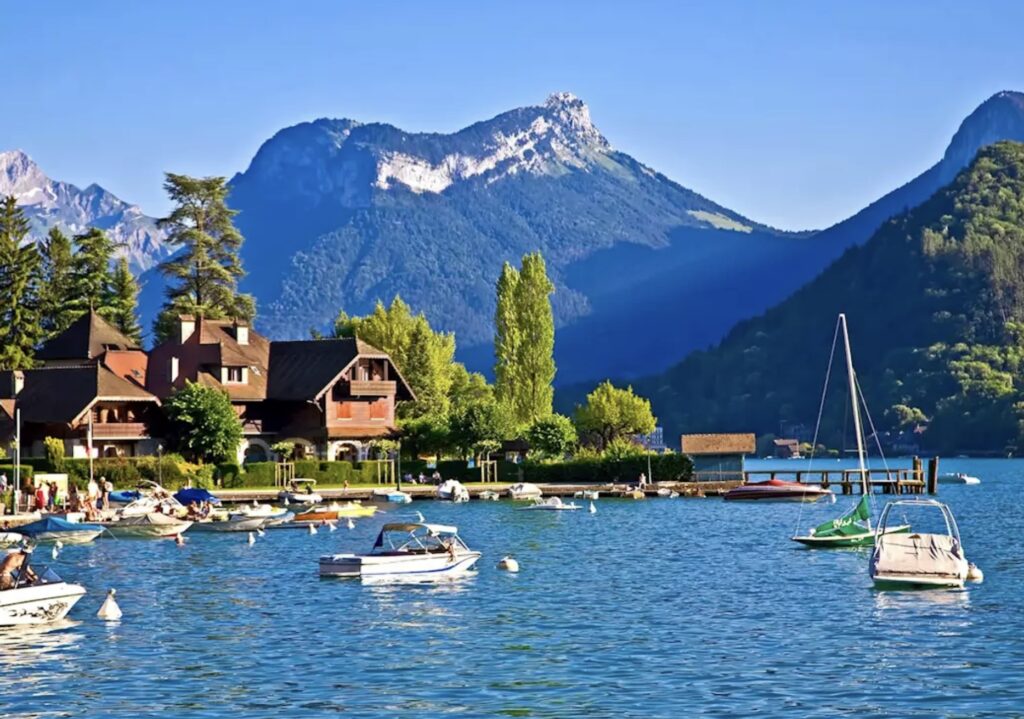
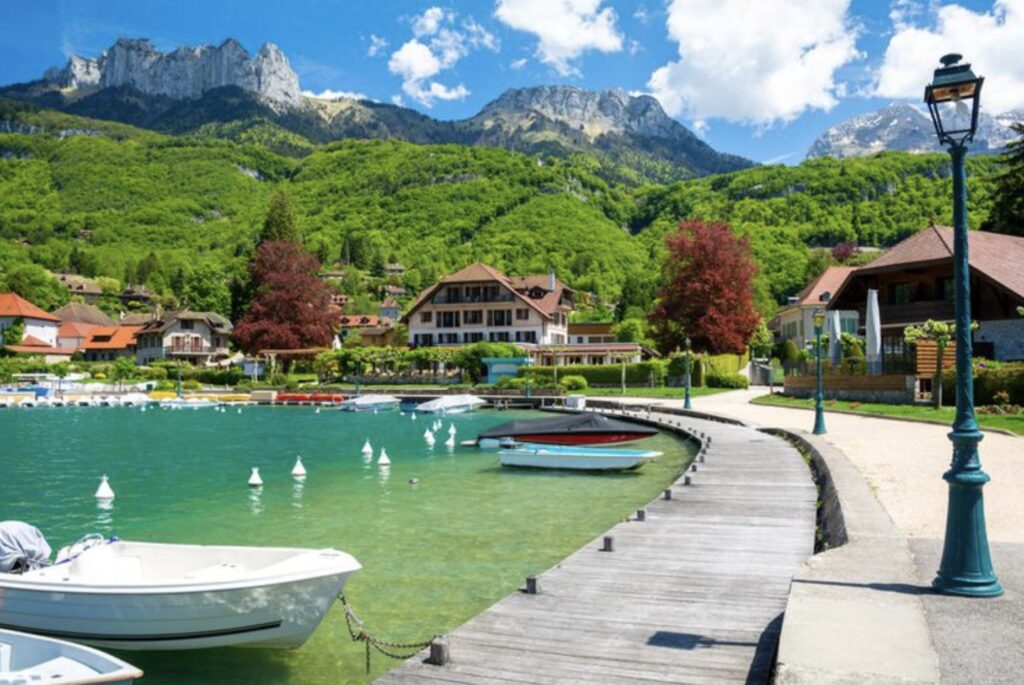
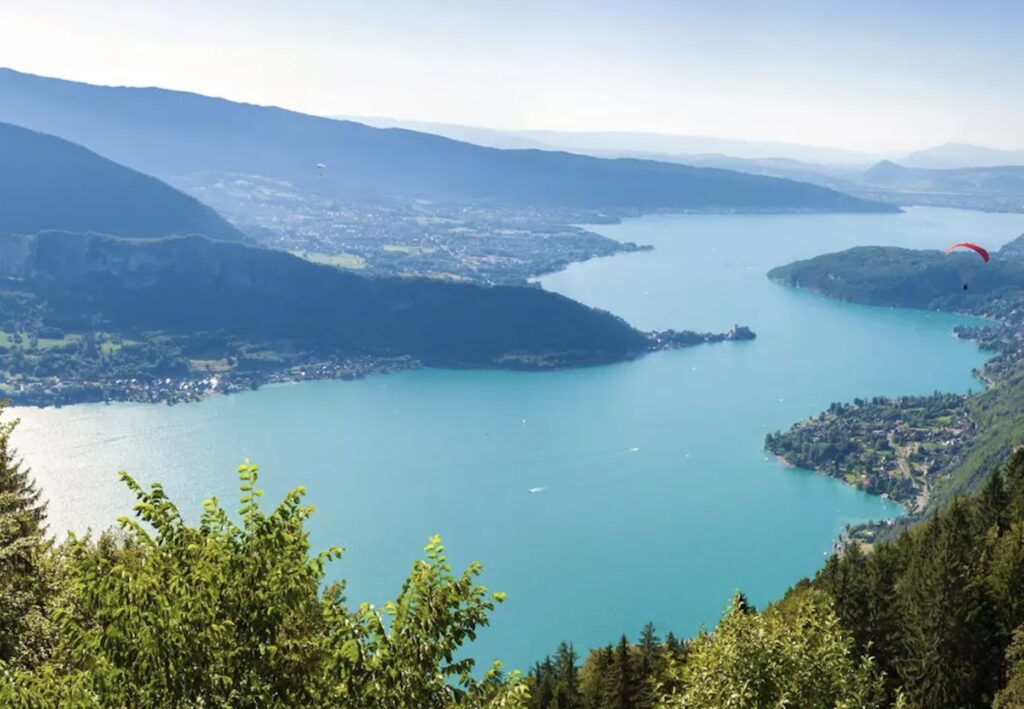
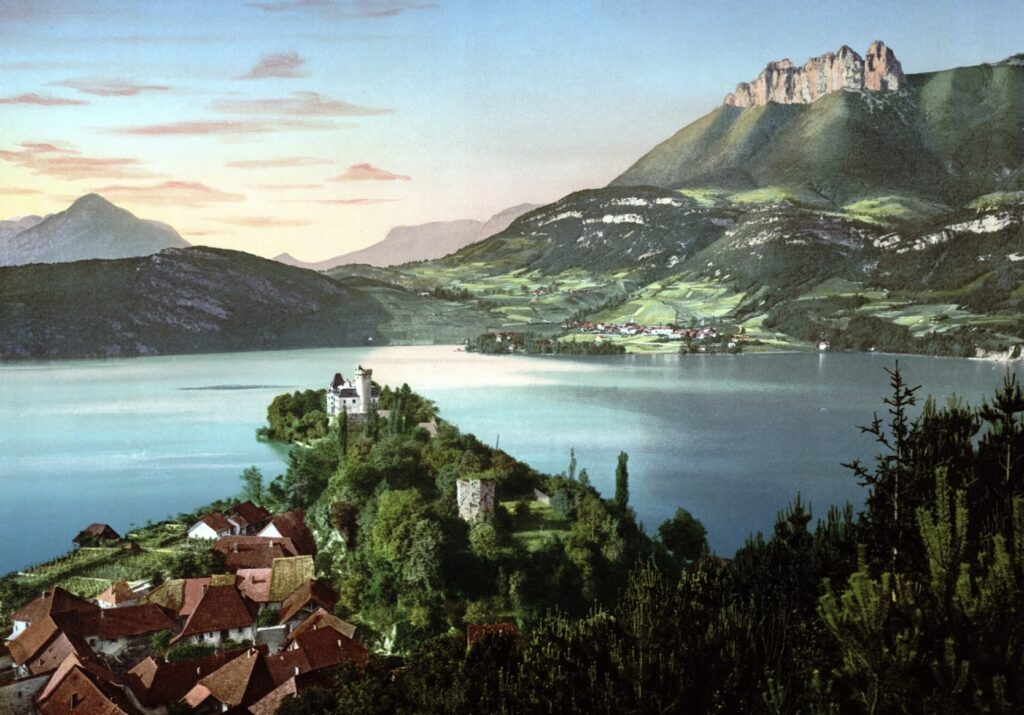
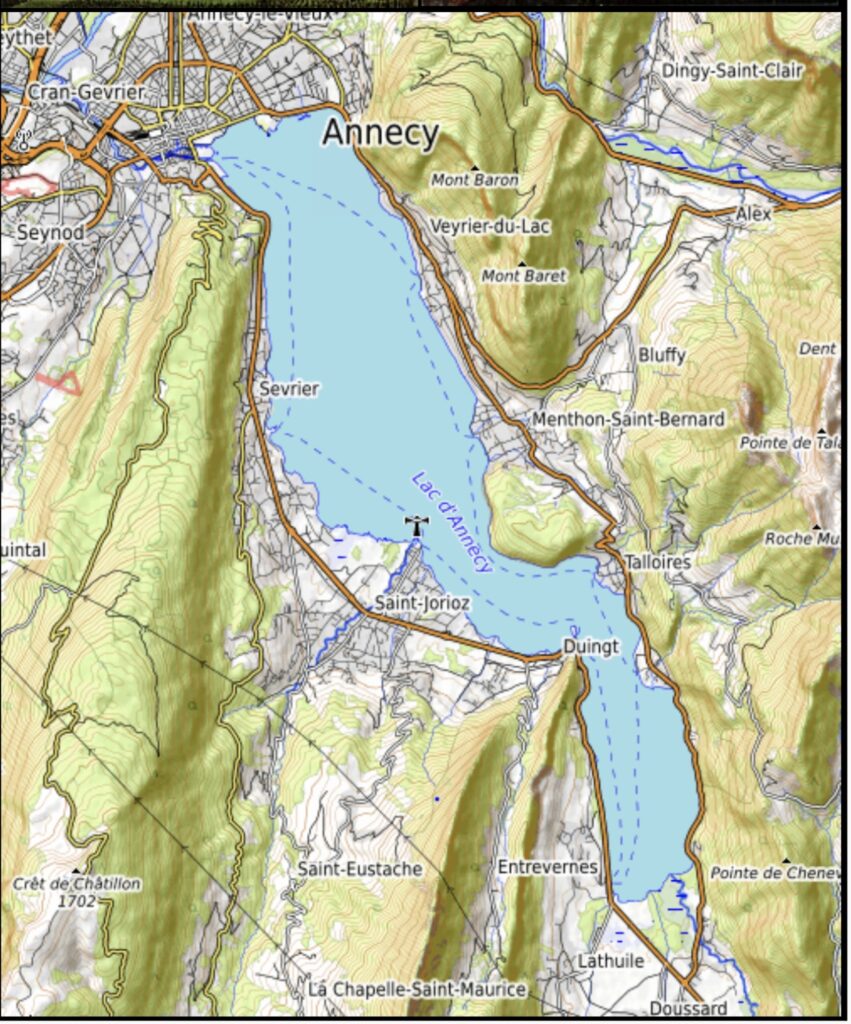
Annecy, located in the Haute-Savoie region of France, offers a variety of delicious local specialties that reflect its Alpine heritage. Here are some local food specialties you should try:
1. Tartiflette
A hearty dish made with potatoes, reblochon cheese, lardons (bacon pieces), and onions, baked to perfection. It’s a comforting and flavorful dish, perfect for cooler weather.
2. Fondue Savoyarde
This classic Alpine dish consists of a pot of melted cheese (typically a mix of Comté, Beaufort, and Emmental) served with chunks of bread for dipping. It’s a communal dish, often enjoyed with friends or family.
3. Raclette
A traditional dish where raclette cheese is melted and scraped over boiled potatoes, pickles, and cured meats. It’s often served with a special raclette grill at the table.
4. Diots de Savoie
These are Savoyard sausages made from pork, often flavored with cabbage or white wine. They are typically served with polenta or potatoes and onions.
5. Crozet
Small square-shaped pasta made from buckwheat or wheat flour. It’s often baked in a gratin with cream and cheese or served as a side dish.
6. Pormonier
A type of sausage made with pork, greens, and herbs. It’s usually served with potatoes or in a hearty stew.
7. Lake Fish
Annecy’s location by the lake means fresh fish is a common specialty. Perch, trout, and Arctic char are often featured in local dishes, whether grilled, pan-fried, or prepared in various traditional recipes.
8. Reblochon Cheese
A creamy, semi-soft cheese with a washed rind, reblochon is a staple in many local dishes, including tartiflette. Enjoy it on its own, with bread, or melted into dishes.
9. Tomme de Savoie
A semi-firm cheese with a distinct flavor, made from cow’s milk. It’s often enjoyed as part of a cheese platter or melted into various dishes.
10. Farcement
A unique regional dish made with grated potatoes, dried fruits, bacon, and sometimes prunes, cooked in a mold. It’s a sweet and savory combination often served as a side dish.
Desserts:
- Gâteau de Savoie: A light sponge cake made with eggs, sugar, and flour, often flavored with lemon or vanilla.
- Bugnes: Sweet, crispy fritters dusted with powdered sugar, typically enjoyed during Carnival season.
These specialties provide a delightful taste of the region’s culinary traditions, reflecting its Alpine and agricultural heritage.
